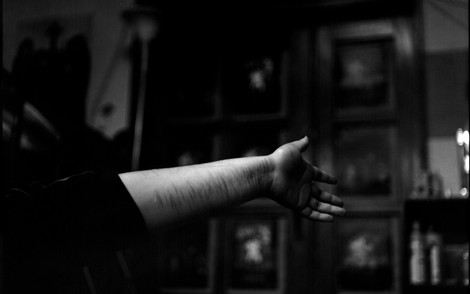Your podcast discovery platform
Curious minds select the most fascinating podcasts from around the world. Discover hand-piqd audio recommendations on your favorite topics.

piqer for: Health and Sanity Global finds
I was born in 1987 in Bucharest. I studied Psychology and Educational Sciences at the University of Bucharest. For two years I worked in a psychotherapy practice, dealing with gambling addicts. I'm an independent reporter, writing and doing video reportages mostly about social and political issues. I am currently based in Jena.
“Why, For Some Of Us, Feeling Bad Means Feeling Good”
The article starts off with the author’s own account of self-harm, then goes on to explain through studies and research what happens to people who self-injure and “why, for some of us, feeling bad means feeling good”.
But first, a few pit-stops through the history of blood, self-mutilation and their meaning as symbols in war and religion. You’ll find here two clinically detailed and gruesome cases of people who self-injured, one from the fifth century BCE, and one from the 1800s when the first clinical reports about self-injury appeared. So if you’ve got a weak heart, you may want to skip this paragraph.
Two scientists started researching self-injury in the 1980s because they were intrigued by the people who did that:
“None of these women showed signs of psychosis or personality disorders, nor were they cutting or burning themselves with any intent of suicide”.
Other psychologists who conducted studies found that the rate of self-harm among students — that is, people living in communities and who hadn’t been diagnosed with any mental illness — is higher than expected. That's not to say that self-harm and suicide are not linked, but there are more aspects of the former that need looking into. Then the scientific community tried to understand the motivations behind hurting oneself. "‘By far the most common reason people said they self-injured was to stop feeling so bad,’ Prinstein said."
The reasons and feelings of people while self-harming led researcher Joseph Franklin to think about the differences in pain perception between people. He found that those who were very self-critical and those who had issues regulating their emotions were also the ones who could stand pain the longest. Moreover, brain studies show emotional and physical pain are processed by the same brain areas.
In the last paragraphs we get a bit of a relief when the author explains the potential treatments and gives an account of what worked for her in fighting back self-destructive thoughts.
